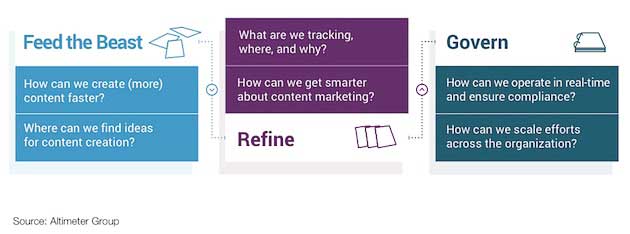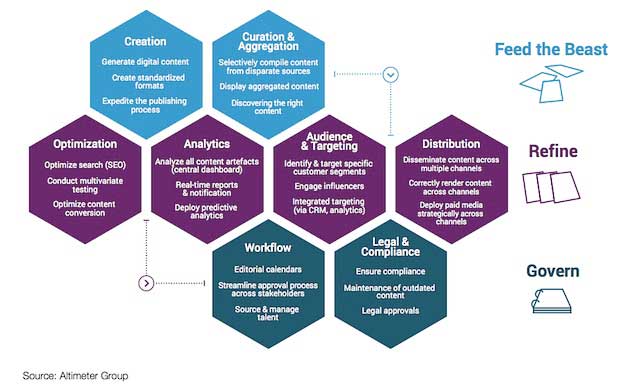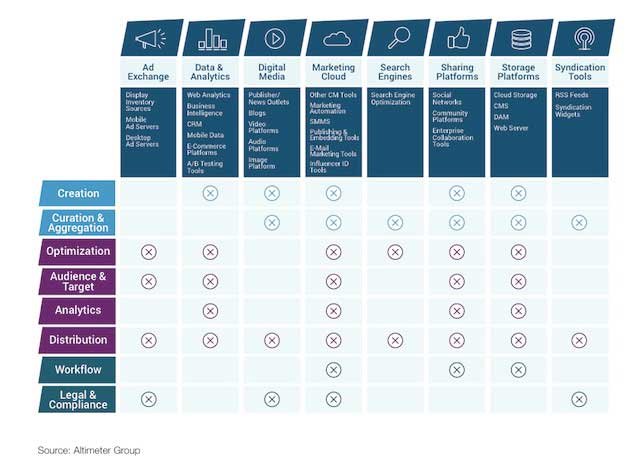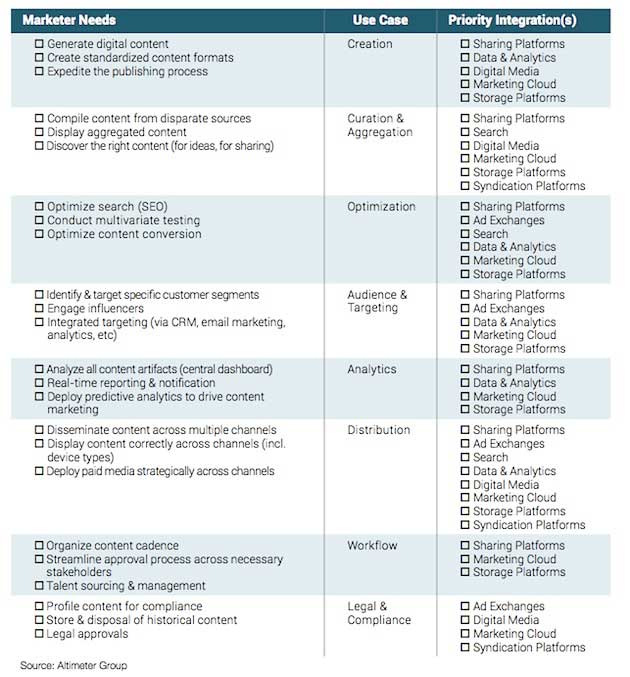At least 110 vendors are currently selling content marketing software—not including dedicated solutions for things such as email, marketing automation, content management, digital asset management, and social media management—according to a recent analysis by Altimeter Group.
Considering the plethora of choices, how can marketers find the right tools that fulfill their needs and also meet enterprise, process, and platform requirements?
Altimeter recently released a report outlining software-selection best-practices based on data from a survey of marketers and vendors.
The following is the organization's recommended three-step process for finding the right solutions.
Step 1. Create Use Cases and Determine Requirements
Before doing anything else, create use cases so that you truly understand your organization's needs, Altimeter recommends.
Specifically, for software, begin by evaluating which content marketing scenarios your business currently deals with and which ones it may encounter in the future.
The report outlines three broad buckets for most common scenarios: Feed the Beast (the initial rush to efficiently create and collect content at scale), Refine (getting smarter, optimizing processes, insights, targeting, and program deployment), and Govern (formalizing and communicating strategy, creating advanced content that can be repurposed, understanding legal and compliance issues).

Once you have a sense of which general content marketing scenarios your organization most often deals with, you can create specific use cases and outline your needs. This process should include speaking with stakeholders and end-users about their requirements and workflows.
It can also include re-examining the broad scenarios at a more granular level to assess exactly which situations you plan to use the software in.
Step 2. Plan for Integration and Evolution
Next, Altimeter suggests, examine your integration requirements. In particular, how your software will need to integrate with...
- Systems, including data and analytics platforms, CRM, and inbound marketing tools.
- The organization, such as internal communications and internal networks.
- Processes, including workflow and organizational structure (both internal teams and any outside agencies).
The following figure charts how some typical points of integration map to common use cases:
Step 3. Identify and Prioritize Vendors
Finally, once you have a solid understanding of use cases and integration, you can use the following checklist to help prioritize those needs for vendors.
Altimeter recommends ranking the use cases in order of priority, and maintaining focus on the top three to five:
About the research: The report was based on data from a survey of 80 marketers and 53 vendors, as well as interviews with 10 experts from brands, agencies, and VC firms.







